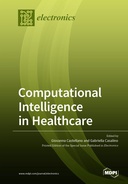Explore

Computational Intelligence in Healthcare
0 Ungluers have
Faved this Work
Login to Fave
The number of patient health data has been estimated to have reached 2314 exabytes by 2020. Traditional data analysis techniques are unsuitable to extract useful information from such a vast quantity of data. Thus, intelligent data analysis methods combining human expertise and computational models for accurate and in-depth data analysis are necessary. The technological revolution and medical advances made by combining vast quantities of available data, cloud computing services, and AI-based solutions can provide expert insight and analysis on a mass scale and at a relatively low cost. Computational intelligence (CI) methods, such as fuzzy models, artificial neural networks, evolutionary algorithms, and probabilistic methods, have recently emerged as promising tools for the development and application of intelligent systems in healthcare practice. CI-based systems can learn from data and evolve according to changes in the environments by taking into account the uncertainty characterizing health data, including omics data, clinical data, sensor, and imaging data. The use of CI in healthcare can improve the processing of such data to develop intelligent solutions for prevention, diagnosis, treatment, and follow-up, as well as for the analysis of administrative processes. The present Special Issue on computational intelligence for healthcare is intended to show the potential and the practical impacts of CI techniques in challenging healthcare applications.
This book is included in DOAB.
Why read this book? Have your say.
You must be logged in to comment.
Rights Information
Are you the author or publisher of this work? If so, you can claim it as yours by registering as an Unglue.it rights holder.Downloads
This work has been downloaded 98 times via unglue.it ebook links.
- 98 - pdf (CC BY) at Unglue.it.
Keywords
- 1D pooling
- Alzheimer’s disease
- artificial neural network
- body area network
- Classification
- Clustering
- Computational intelligence
- convolutional neural network
- CRISPR
- cross pooling
- Decision support systems
- deep learning
- diabetic retinopathy (DR)
- Diffusion Tensor Imaging
- E-Health
- early detection
- Economics, finance, business & management
- electrocardiogram
- ensemble learning
- evaluation metrics
- everyday walking
- fault data elimination
- feature extraction
- fuzzy inference systems
- gait analysis
- gait phase
- Genetic algorithms
- health off
- health status detection
- health status prediction
- Healthcare
- IMU
- Industry & industrial studies
- Information technology industries
- Internet of Medical Things
- interpretable models
- leukemia nucleus image
- long-term monitoring
- Machine learning
- machine learning algorithm
- Media, information & communication industries
- medical diagnosis
- Medical informatics
- MIMU
- multi-modal deep features
- multi-sensor
- multi-unit
- multiple imputation by chained equations
- multistage support vector machine model
- n/a
- neural networks
- next-generation sequencing
- ovarian cancer
- physionet challenge
- pre-trained deep ConvNet
- premature ventricular contraction
- segmentation
- sEMG
- Sepsis
- Soft computing
- soft covering rough set
- Softmax regression
- sparse autoencoder
- SVM-based recursive feature elimination
- time synchronization
- transfer learning
- Tri-Fog Health System
- uni-modal deep features
- unipolar depression
- unsupervised learning
Links
DOI: 10.3390/books978-3-0365-2378-1Editions

